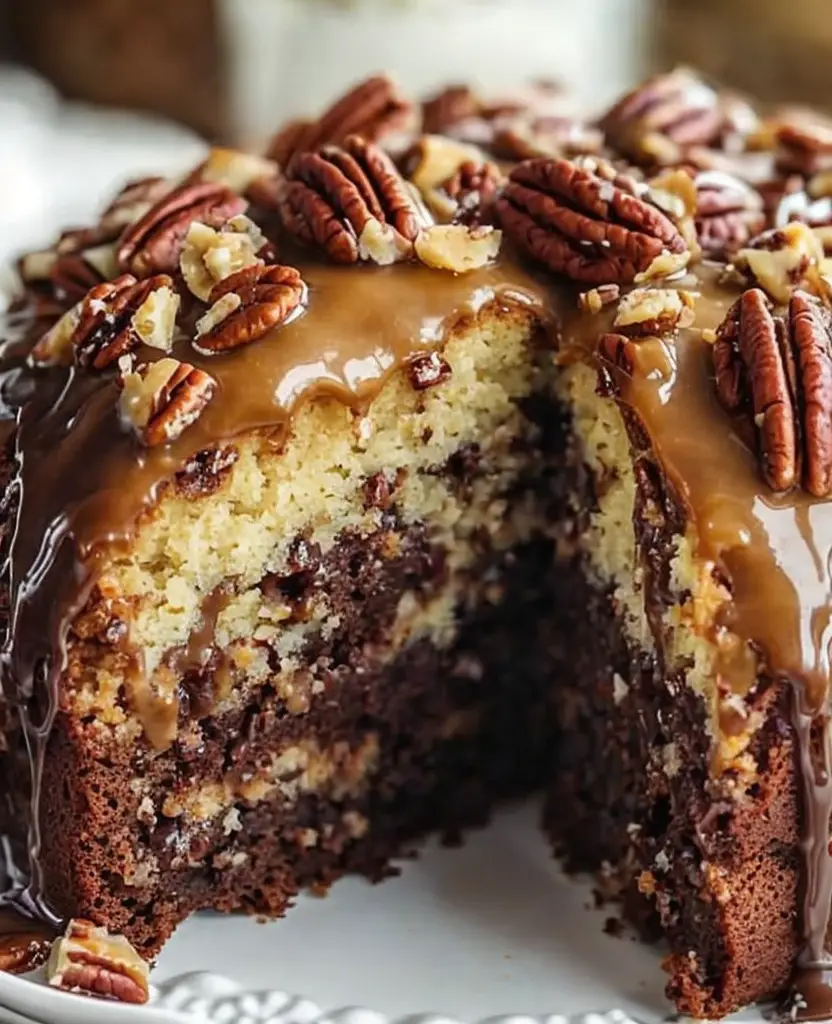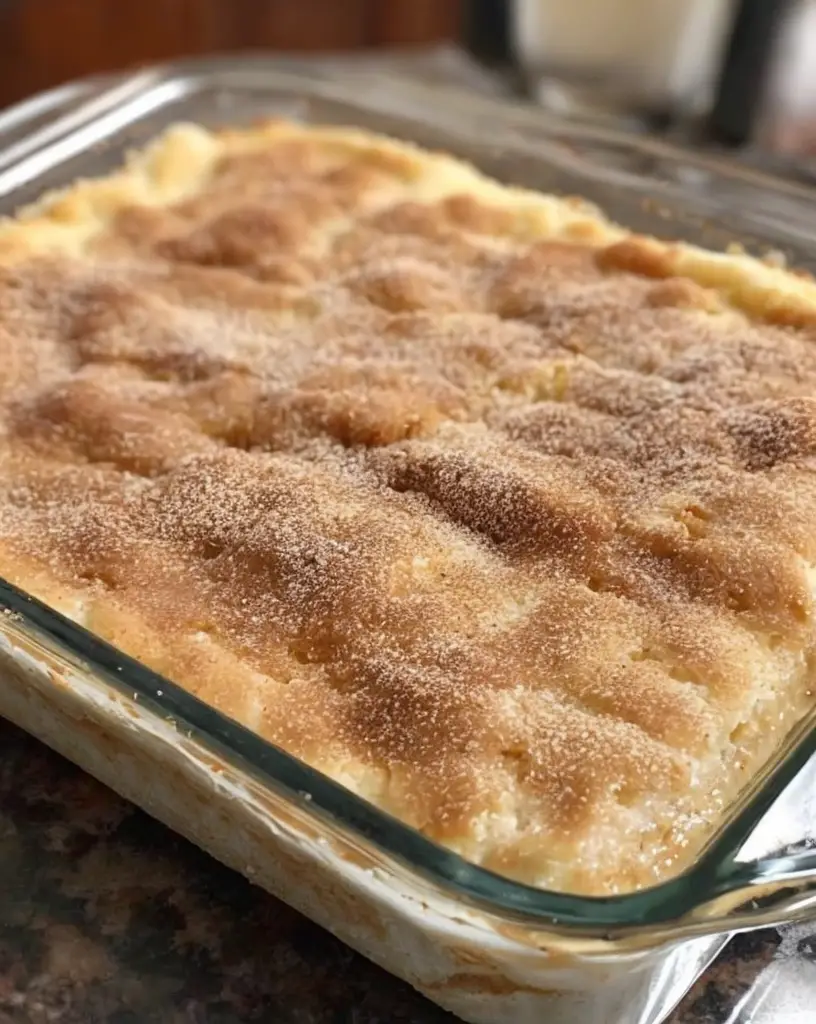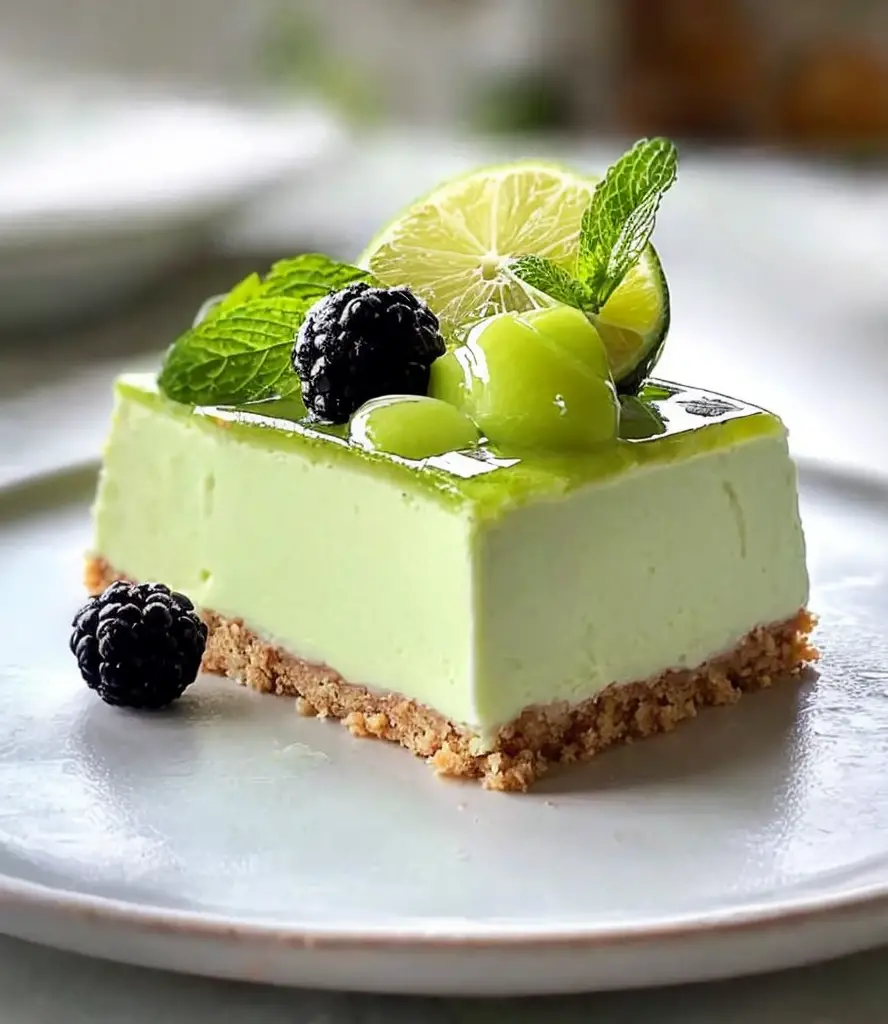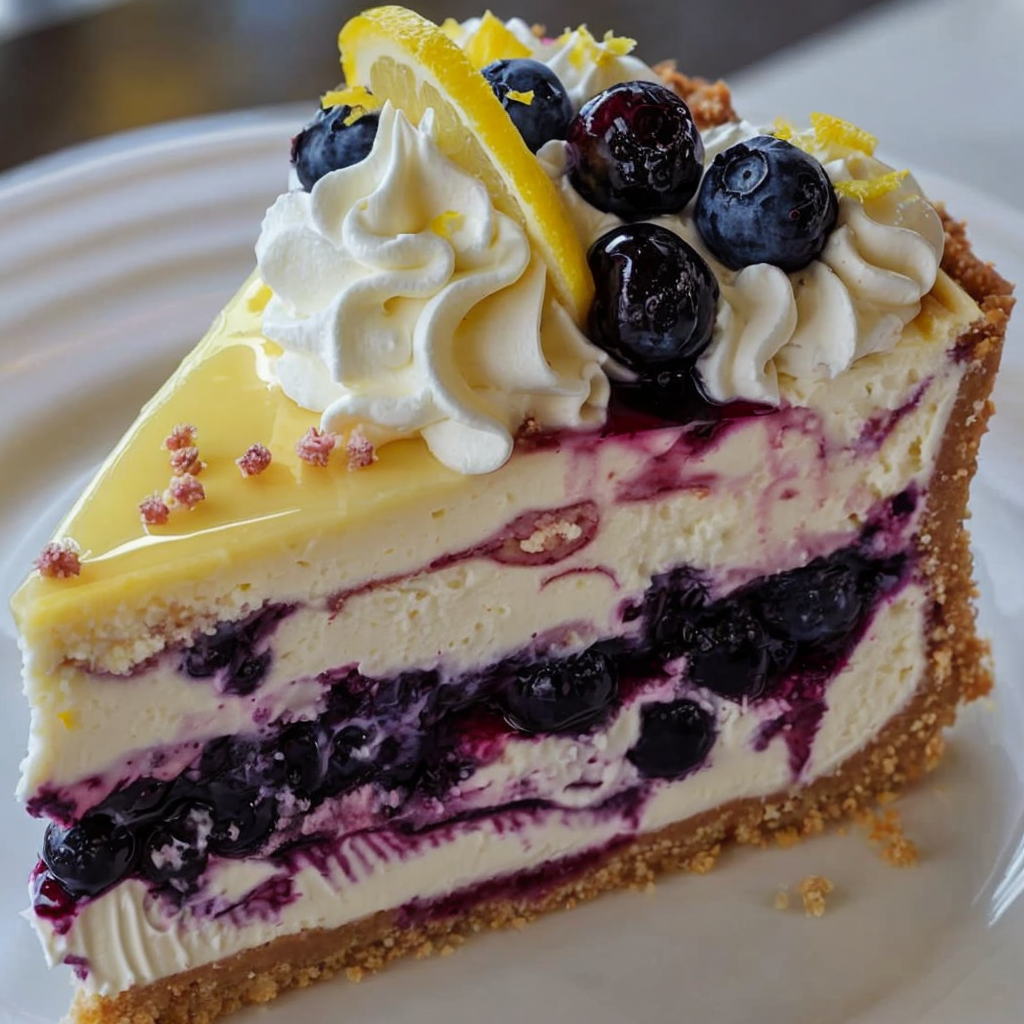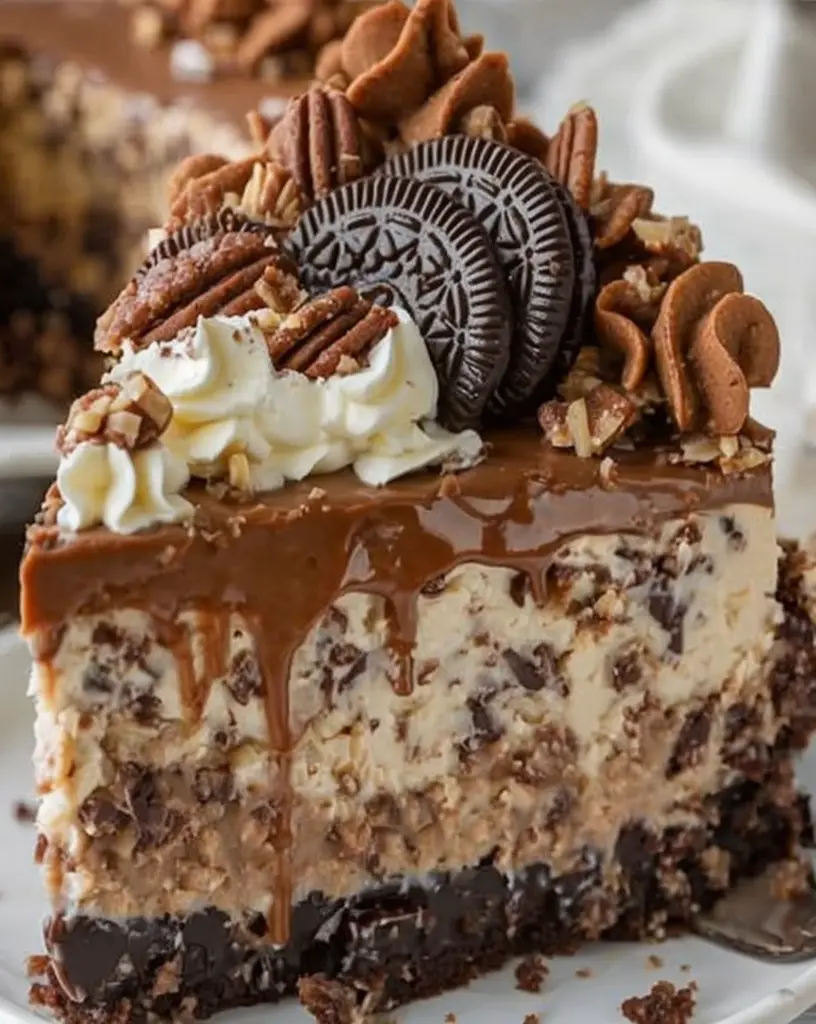Decadent German Chocolate Pecan Pound Cake: A Sweet Indulgence for Every Occasion
Are you ready to indulge in a dessert that embodies rich flavors and delightful textures? This Decadent German Chocolate Pecan Pound Cake is a true celebration of sweet culinary art, combining the deep, nutty flavors of German chocolate with crunchy pecans to create a treat that will captivate your taste buds. Every bite offers a blend of chocolatey sweetness and buttery richness that makes it perfect for gatherings or simply as a delightful afternoon treat. You’ll find that this cake doesn’t just satisfy your sweet tooth but also provides a luxurious experience that you won’t forget anytime soon!
This irresistible pound cake, with its moist and dense crumb, strikes the perfect balance between rich cocoa flavors and the crunch of toasted pecans. The deeply aromatic scent of freshly baked chocolate envelops your kitchen, enhancing the atmosphere with warmth and inviting memories of family gatherings. Whether enjoyed with a cup of coffee or served as a stunning centerpiece for an occasion, this cake is sure to win hearts and palates alike.
Quick Recipe Highlights
- Flavor Profile: A harmonious mix of sweet chocolate, toasted pecans, and a touch of vanilla.
- Texture: Moist and dense with a rich crumb, complemented by the crunch of pecans.
- Aroma: The inviting scent of chocolate and butter fills the air as it bakes.
- Visual Appeal: Beautifully garnished with chocolate curls and toasted pecans, it’s a sight to behold.
- Skill Level Needed: While labeled as medium difficulty, it is achievable for novice bakers willing to follow instructions.
- Special Equipment: Standard baking equipment plus a good quality bundt pan for the best result.
Recipe Overview
- Difficulty Level: This recipe is considered medium due to the need for proper mixing techniques and baking times to achieve the desired texture.
- Category: This cake fits perfectly as a dessert that can stand out at any celebration, from birthdays to holiday gatherings.
- Cuisine: Rooted in German traditions but adapted by American bakers, it showcases the love for chocolate and nuts in baking.
- Cost: With ingredients like German chocolate and pecans, the approximate cost for this recipe is moderate, yet worth every penny for a special treat.
- Season: This cake shines year-round, but it feels particularly fitting during festive seasons when chocolate desserts are in high demand.
- Occasion: Ideal for family celebrations, office parties, or as a comforting dessert at home to share with loved ones.
Why You’ll Love This Recipe
This Decadent German Chocolate Pecan Pound Cake is designed to please both the palate and the eye. The interplay of textures, with the velvety softness of the cake complemented by the crunchy pecans, creates a delightful experience with every bite. The rich chocolate flavor, characteristic of German chocolate, invites a touch of indulgence, making it a standout dessert for any occasion. Each slice serves as a reminder of the joy found in baking and sharing delicious treats with those you care about.
Convenience is another reason to love this recipe. It requires standard kitchen tools and ingredients that can easily be found at your local grocery store. The preparation is straightforward, making it a fantastic choice for both novice and seasoned bakers. Additionally, the cake stays fresh for days when stored properly, allowing you to enjoy it over time.
From a nutritional perspective, this cake features quality chocolate and pecans, which provide beneficial nutrients, including healthy fats, antioxidants, and minerals. While indulgent, it can be a part of a balanced diet when enjoyed in moderation, allowing you to savor the sweetness without guilt.
Social gatherings are made sweeter with this cake at the center. It sparks conversations, brings smiles, and invites nostalgia as people share memories connected to chocolate desserts. Whether you are hosting a birthday party or a casual get-together, this cake is a showstopper that enhances the overall atmosphere.
Cost-effectiveness is evident since this recipe yields multiple servings, making it a great value. Preparing a homemade pound cake is often more economical compared to purchasing elaborate desserts from bakeries. Plus, you’ll have the satisfaction of creating a dessert that is both delicious and memorable.
Historical Background and Cultural Significance
The origins of German chocolate cake can be traced back to a recipe developed by a British expat named Samuel German in 1852. His dark-baking chocolate, known as “Baker’s German’s Sweet Chocolate,” laid the groundwork for what would evolve into the German chocolate cake we know today. While the original recipe was intended for a layered cake, American bakers eventually adapted it into various forms, including the timeless pound cake.
Culturally, German chocolate cake holds a special place in American dessert traditions, especially in the Southern states. It has been a beloved treat at family gatherings and celebrations for generations. The combination of chocolate and pecans echoes the rich agricultural heritage of the South where both ingredients thrive. It symbolizes comfort and indulgence, often evoking feelings of nostalgia among those who grew up enjoying it.
Over the years, the recipe has transformed, giving rise to numerous interpretations. From elaborate layer cakes to simpler pound cakes, bakers have embraced creativity while respecting the origins of German chocolate. Each variation offers a unique taste while paying homage to the original concept of this iconic dessert.
Regional variations can be found, showcasing local ingredients and baking traditions. For instance, some recipes incorporate coconut, adding an additional layer of texture and flavor. Others might replace pecans with local nuts, making it a delightful reflection of the community it originates from.
Ingredient Deep Dive
German Chocolate: This unique chocolate is sweeter than standard dark chocolate, offering distinct flavors derived from the beans used. It has a rich history that dates back to 19th century America and is known for adding moisture and softness to baked goods. When selecting German chocolate, aim for high-quality brands for the best flavor. Store it in a cool dry place, and consider using it in other baked goods for a delicious twist.
Pecans: Pecans have long been celebrated in Southern cuisine and stand out not only for their flavor but also for their nutritional profile, which includes healthy fats, fiber, and essential vitamins. When choosing pecans, ensure they are fresh and ideally, lightly toasted to enhance their nutty taste. Storing them in airtight containers in a cool environment can prolong their freshness, and they can easily be swapped with other nuts if you’re looking for variety.
Common Mistakes to Avoid
- Overmixing the batter can lead to a dense texture; mix just until combined.
- Not properly measuring ingredients may alter the cake’s overall balance; use a kitchen scale for accuracy.
- Skipping the step of greasing and flouring the pan can result in sticking; take this step seriously.
- Underbaking or overbaking can affect texture; ensure you do the toothpick test to confirm doneness.
- Not allowing the cake to cool before removing it from the pan can cause breakage; patience is key.
- Using room temperature ingredients improperly can lead to an uneven batter; always follow temperature recommendations.
- Neglecting to toast the pecans may result in a lack of depth in flavor; toasting enhances their nutty essence.
- Inconsistent oven temperatures may skew baking time; use an oven thermometer to maintain correct baking conditions.
- Not following the recipe step-by-step can lead to unexpected results; adhere to the method for best outcomes.
- Using old baking soda or powder may compromise the rise; always check the freshness of your leavening agents.
Essential Techniques
Proper Creaming of Butter and Sugar: This technique is critical for achieving the right texture. Begin with room temperature butter and sugar and cream them together until light and fluffy. This process incorporates air, which helps to create a soft and tender cake. Avoid overcreaming, as it can lead to too much air incorporation, resulting in collapse during baking.
Layering Ingredients: When adding dry ingredients to the wet mixture, do so gradually. This method allows for uniform incorporation and minimizes clumping. Begin by alternating between flour and liquid additions, starting and ending with flour. Mixing gently after each addition promotes a tender crumb without overdeveloping gluten.
Pro Tips for Perfect Decadent German Chocolate Pecan Pound Cake
1. **Always Preheat Your Oven:** Make sure your oven is preheated to the proper temperature to ensure even baking throughout.
2. **Use Quality Ingredients:** Invest in high-quality chocolate and fresh pecans for a richer flavor in your cake.
3. **Opt for Room Temperature Ingredients:** Allow butter, eggs, and milk to come to room temperature to achieve better emulsion and texture.
4. **Do Not Rush Cooling:** Let the cake cool completely in the pan before inverting; this helps preserve its shape.
5. **Experiment with Flavors:** Feel free to add a dash of espresso powder to intensify the chocolate flavor in the cake.
6. **Try Different Nuts:** While pecans create a delightful texture, consider using walnuts or hazelnuts for a different taste experience.
7. **Add a Glaze:** Drizzle the cooled cake with a chocolate or caramel glaze for an extra layer of sweetness.
8. **Garnish Thoughtfully:** Use shaved chocolate or additional toasted nuts to elevate presentation and texture.
Variations and Adaptations
If you’re looking to switch things up, consider adding seasonal flavors such as fresh citrus zest for a light, bright contrast in the rich cake. You can also adapt the recipe to include different nuts or even dried fruits like cherries or cranberries for a unique twist. For vegan adaptations, substitute the eggs with flax eggs and use plant-based butter and milk for a delicious dairy-free version.
For texture modifications, try adding a layer of cream cheese frosting between the layers if you choose to make a layered version of this cake for added creaminess. The overall presentation can also be enhanced with fresh fruit arrangements or edible flowers, making it look as delightful as it tastes.
Serving and Presentation Guide
Plating your Decadent German Chocolate Pecan Pound Cake can be as simple or elaborate as you wish. For a rustic look, serve it directly from the bundt pan with a light dusting of powdered sugar. For a more elegant feel, slice the cake on a decorative platter and garnish with fresh berries or a chocolate ganache drizzle. To enhance visual appeal, consider adding candied pecans around the base or top of the cake.
Temperature plays a crucial role in enjoying your cake; serve slightly warm or at room temperature for optimal flavor release. Portioning can be done with a serrated knife for clean, even slices, ensuring guests receive equal servings of this indulgent treat.
Wine and Beverage Pairing
When it comes to pairing beverages with this decadent dessert, a rich red wine like Cabernet Sauvignon complements the chocolate flavors beautifully. Alternatively, a sweet dessert wine such as Port can amplify the sweetness, making it a fitting choice for special occasions.
For non-alcoholic options, a robust coffee or creamy chai tea can enhance the flavors of the cake. If choosing to serve with tea, opt for a black tea with hints of spice to balance the richness of the chocolate.
Storage and Shelf Life
To store your Decadent German Chocolate Pecan Pound Cake, wrap it tightly in plastic wrap or aluminum foil to keep it fresh for up to a week at room temperature. If you need to store it longer, consider freezing the cake; wrapped securely, it can last up to three months in the freezer.
For thawing, simply remove it from the freezer and let it sit at room temperature for several hours. Be mindful of signs of spoilage, such as off smells or visible mold, which indicate that it’s best to discard rather than consume.
Make Ahead Strategies
If entertaining, consider baking the cake a day or two in advance. It stores well, and some find that the flavors deepen over time. You can prepare the cake, let it cool completely, and then wrap it tightly in plastic wrap to keep it fresh until the day of serving.
When baking in advance, it’s helpful to keep frosting or ganache separate until just before serving to maintain texture. Always revisit the cake before serving to check if extra garnishes or accompaniments are desired.
Scaling Instructions
Scaling this Decadent German Chocolate Pecan Pound Cake is straightforward. If halving the recipe, a smaller bundt pan may be required, and the baking time will likely decrease. Conversely, if you decide to double or triple the recipe, ensure that you have the correct size of baking pans to accommodate the batter.
Watch the baking time closely and perform a toothpick test to ensure that the cake is baked through without being dry. Adjust storage accordingly if planning to make larger quantities as they may need more space in your refrigerator or freezer.
Nutritional Deep Dive
Examine the macros of this Decadent German Chocolate Pecan Pound Cake to help manage portion sizes effectively. A single slice offers a satisfying balance of carbohydrates from the sugar and flour base, with healthy fats coming from the pecans and butter.
In terms of micronutrients, this cake provides beneficial vitamins and minerals, including magnesium, phosphorus, and antioxidants from the cocoa and nuts. When enjoying this treat, consider its caloric content versus nutritional benefits, indulging in moderation for an enjoyable experience.
Dietary Adaptations
There are several adaptations available for this recipe to cater to different dietary needs. For a gluten-free option, substitute all-purpose flour with a gluten-free blend, ensuring other ingredients are also free from gluten.
For a vegan twist, replace eggs with flaxseed meal or commercial egg replacers and opt for dairy-free alternatives for butter and milk. Low-carb lifestyles may benefit from using almond flour and erythritol instead of traditional sugars. Meanwhile, those on a paleo diet can enjoy similar adaptations with natural sweeteners and nut-based flours.
Troubleshooting Guide
If your cake comes out dense, it may be due to overmixing or incorrect ingredient temperatures. Ensure that you follow the creaming process carefully and use room temp ingredients for optimal texture. If your cake is too dry, check your baking time; the toothpick test is key to ensuring perfection.
Should you find an uneven rise, consider the placement of the cake in the oven; it should not be too close to the heating elements. For flavor imbalances, try adding a pinch of sea salt or additional vanilla to enhance the cake’s overall profile.
Recipe Success Stories
Our readers have shared glowing feedback about their experiences making this Decadent German Chocolate Pecan Pound Cake. Community members have noted the ease of following the recipe, often remarking on the cake’s perfect balance of sweetness and richness that makes it a guest favorite.
Variations have come into play, with some readers incorporating their favorite ingredients like coconut or caramel, creating unique adaptations that remain true to the original concept. Photography has also been a highlight, with many showcasing their beautifully decorated cakes on social media, inspiring others to bake.
Frequently Asked Questions
Can I use dark chocolate instead of German chocolate?
While dark chocolate can be substituted, it will change the overall sweetness and flavor profile. German chocolate’s unique qualities add a sweetness that complements the cake well.
What is the best way to store leftovers?
Wrap the cake tightly in plastic wrap or store it in an airtight container to keep it fresh. It can be stored at room temperature or in the refrigerator for several days.
Can this cake be frozen?
Yes, this cake freezes well. Wrap it securely in plastic wrap and aluminum foil. It can be frozen for up to three months.
How do I enhance the chocolate flavor?
Add a teaspoon of instant espresso powder to the batter for an enriched chocolate flavor without making the cake taste like coffee.
Is it necessary to toast the pecans?
Toasting pecans enhances their flavor and adds a delightful crunch to the cake, making it a recommended step.
What can be used in place of eggs for a vegan version?
For each egg, you can use one tablespoon of flaxseed meal mixed with three tablespoons of water as a substitute for a vegan cake.
Can I make this cake as a layered cake?
Absolutely! You can bake the batter in multiple round pans to create layers and frost it with your choice of frosting.
What do I do if my cake sinks in the middle?
A sinking cake often results from underbaking or overmixing. Ensure the cake is fully baked before removal and avoid excessive mixing after adding dry ingredients.
Can I add chocolate chips to the batter?
Yes! Adding chocolate chips can enhance the chocolate flavor and provide delightful bursts of chocolate in every slice.
What’s the ideal temperature to serve the cake?
This cake is best served at room temperature, which allows the flavors to fully develop and the texture to shine.
Additional Resources
If you’re inspired by this Decadent German Chocolate Pecan Pound Cake, consider exploring related recipes like classic chocolate cake, pecan pie, or even nut-filled brownies. Deepen your baking knowledge with technique guides on creaming butter or mastering oil-based cakes.
For more insight, look into ingredient specifics such as a deep dive on types of chocolate or the health benefits of various nuts. Equipment recommendations can help refine your baking tools for future successes, making your baking journey even more rewarding.
Join the Conversation
We love hearing your thoughts on this Decadent German Chocolate Pecan Pound Cake! Share your own experiences, suggest variations, and engage with fellow bakers on our social media platforms. Don’t forget to tag us in your photos showcasing your creations. Your feedback and suggestions help build a community of enthusiastic bakers eager to share their culinary adventures.
The Recipe
Decadent German Chocolate Pecan Pound Cake
Serves: 12 slices
Prep Time: 25 mins
Cook Time: 60 mins
Total Time: 85 mins
Kitchen Equipment Needed
- Bundt pan
- Mixing bowls
- Electric mixer
- Measuring cups and spoons
- Rubber spatula
- Cooling rack
Ingredients
- 2 cups all-purpose flour
- 1 teaspoon baking powder
- 1/2 teaspoon baking soda
- 1/4 teaspoon salt
- 1 cup unsalted butter, softened
- 2 cups granulated sugar
- 4 large eggs
- 1 teaspoon vanilla extract
- 1 cup German chocolate, melted
- 1 cup pecans, chopped and toasted
- 1/2 cup buttermilk
Directions
- Preheat your oven to 350°F (175°C). Grease and flour a bundt pan.
- In a medium bowl, whisk together flour, baking powder, baking soda, and salt; set aside.
- In a large mixing bowl, cream together softened butter and sugar until light and fluffy.
- Add eggs one at a time, mixing well after each addition. Stir in vanilla and melted chocolate.
- Gradually add dry ingredients to the wet mixture, alternating with buttermilk; stir in pecans.
- Pour the batter into the prepared bundt pan and smooth the top.
- Bake in the preheated oven for 60-65 minutes, or until a toothpick inserted comes out clean.
- Allow to cool in the pan for 10 minutes, then invert onto a wire rack to cool completely.
Recipe Notes
- For an extra treat, drizzle chocolate ganache over the cooled cake.
- This cake can be made ahead and freezes well for future enjoyment.
- Feel free to substitute walnuts for pecans if desired.
